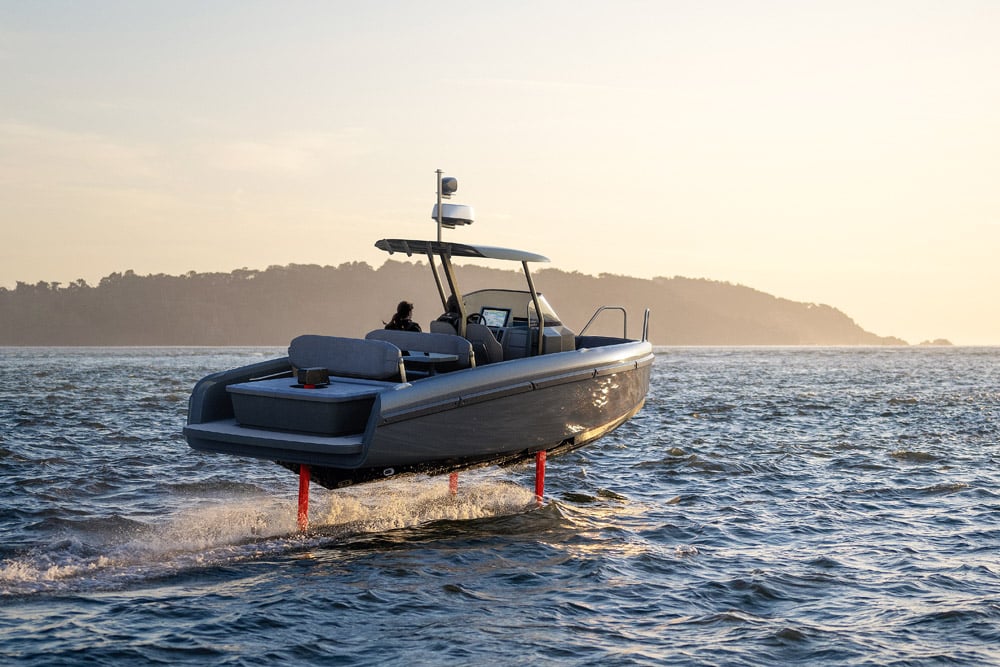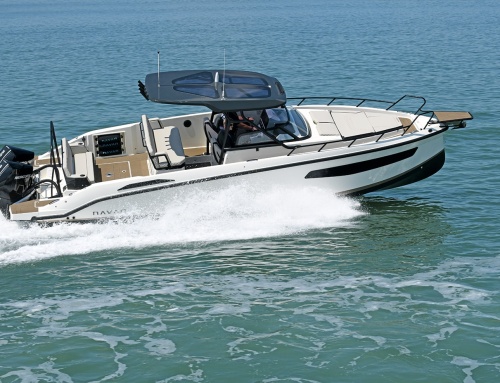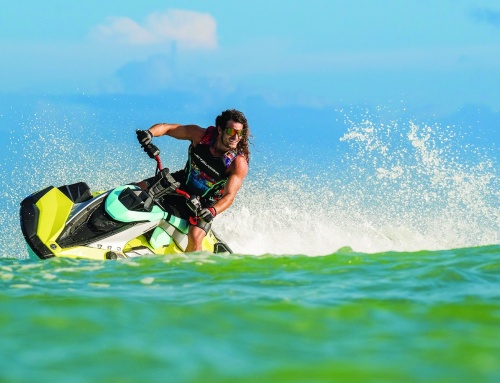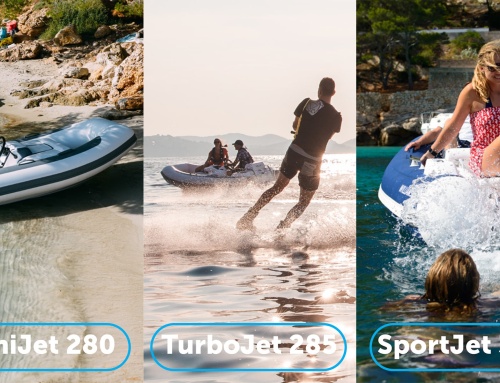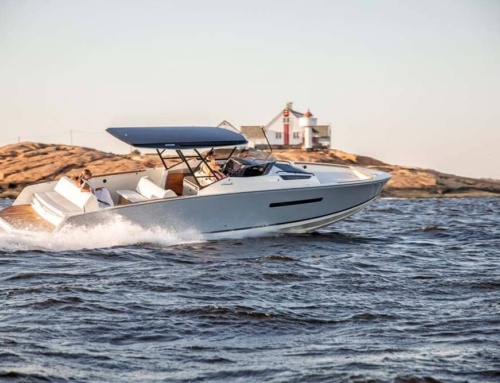Candela’s latest hydrofoil makes a good case for green power.
Possibly one of the most realistic electric boatbuilders to date, Candela’s range has a new addition. The C-8 Centre Console, a development of the original C-8, now offers more bells and whistles with this unique carbon-fibre 29-footer.
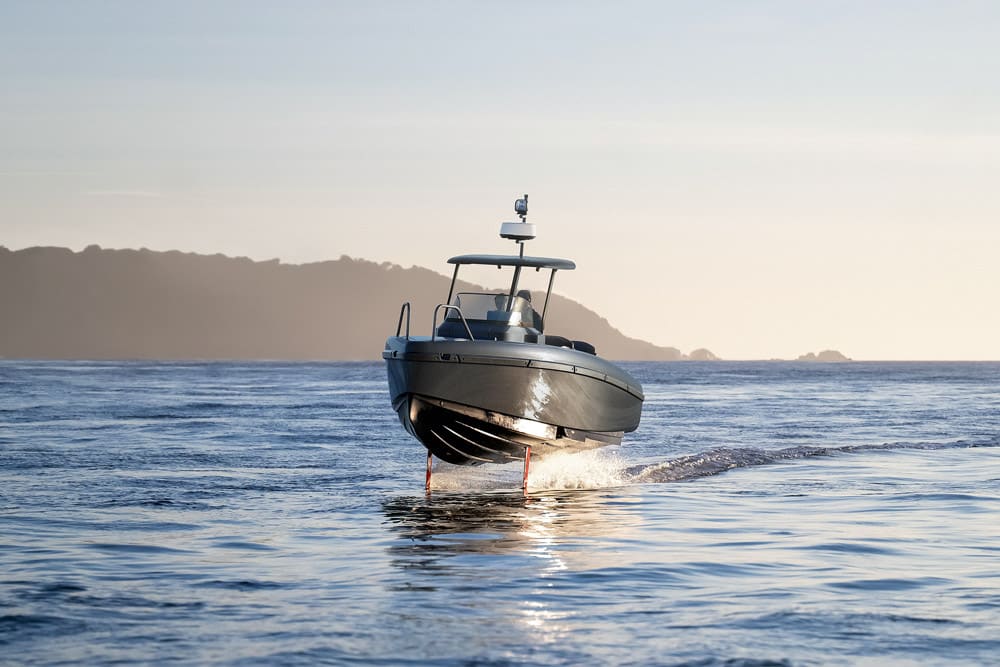
The C-8 Centre Console, a development of the original C-8, now offers more bells and whistles with this unique carbon-fibre 29-footer.
Foiling across the water in near silence, the Swedish-made C-8 CC uses the same foil technology and 69kWh Polestar 2 battery and Polestar charging technology as the standard C-8. It features an open bow with seating, a wet bar, seating for six around the table, an enclosed head, a sunbed, a swim platform and six-speaker stereo system, as well as fishing features such as rod holders and a fish finder.
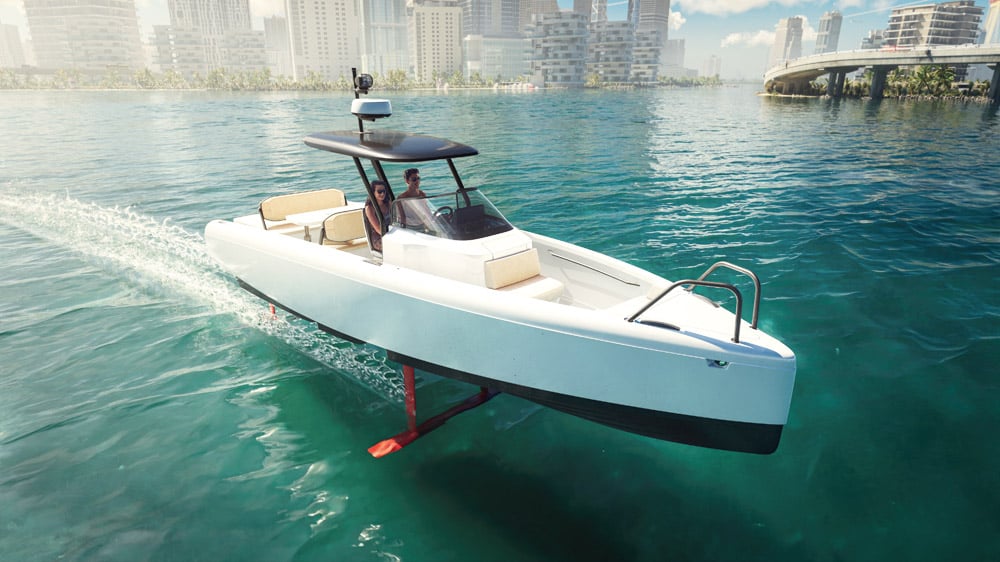
Candela state that this boat can run through 1m seas with little pitching.
Candela claim that their C-8 series uses 80% less energy than a conventional electric planing boat. This relates to a range of 57 nautical miles at 22 knots, and a 30-knot top speed. This might not be much in fossil fuel terms, but for electric power this is generous. A full charge takes around 45 minutes using DC charging, and the C-8 CC boasts fuel costs that translate to just €10 for a full battery charge, it is claimed.* Candela’s hydrofoil technology provides many advantages, including no wake, and the RPM of the silent C-POD motor can be seamlessly adjusted for any speed down to 0.2 of a knot. This trolling feature is ideal for fishermen sneaking up on their catch.
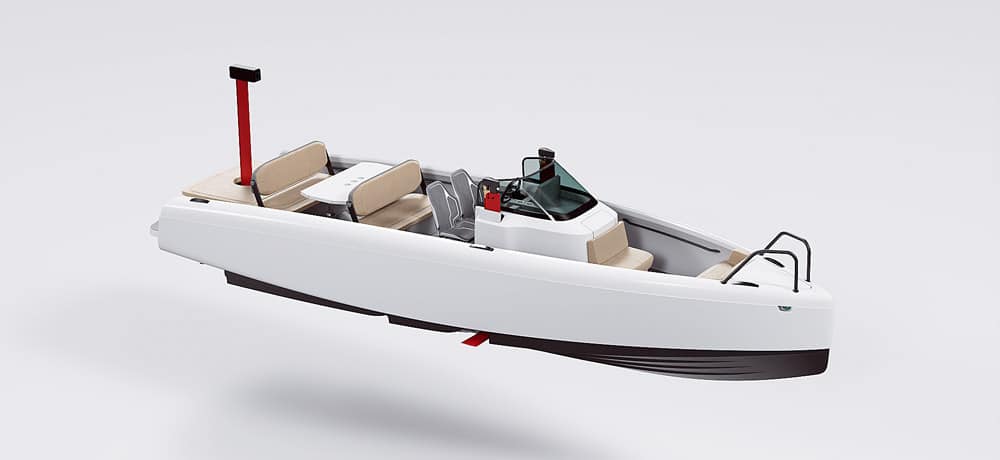
The foils can fully retract.
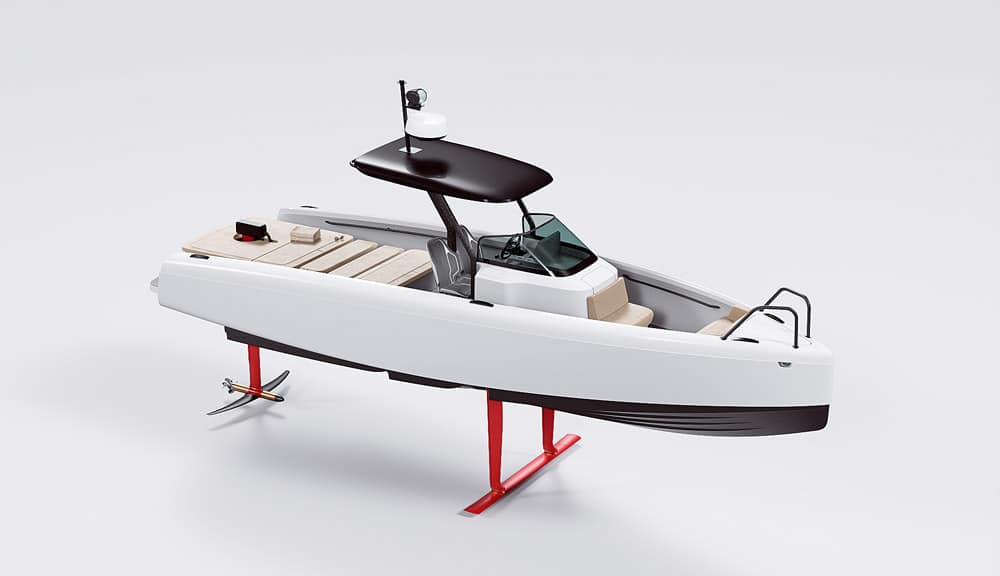
Extensive sunbathing for a 9m boat.
The C-8’s top speed of 30 knots would not normally be achieved with just 75kW (100hp) if it did not ‘fly’ on foils. Foils are nothing new, but the flight computer-like system that controls them is impressive. The foils deploy beneath the boat at the same time as the engine descends and trims to a depth to match. The foils comprise one full-beam foil forward – moving vertically courtesy of two vertical blades – and the aft foils, which are located either side of the C-POD. To give this boat stability, the ‘flight computer’ controls the height and angle of the foils in relation to sea state, steering and speed. To understand the sea state it uses a series of forward-mounted sonar sensors, which feed information at a rate of 100 data items per second in terms of wave height and direction. The foils adjust accordingly, providing a level ride into rough weather. Candela state that this boat can run through 1-metre seas with little pitching. The height of the foils can also be adjusted when turning by lowering the foil height on the inside of the turn, providing the heel required to counter the centrifugal force placed on the boat. The foils and C-POD motor are fully retractable, allowing for trailering and beaching the boat.
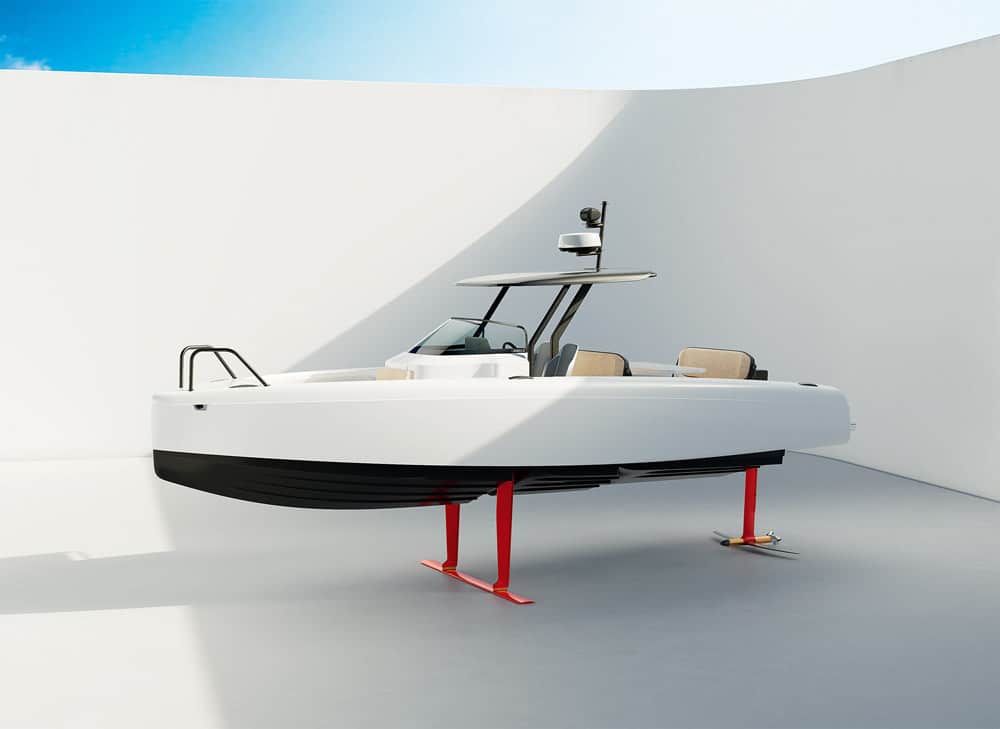
Having a stepped hull helps to conceal the front foil in conventional mode.
Made entirely from carbon fibre, the C-8 CC starts at €330,000, including a 15.4in navigational screen. This price includes free over-the-air updates for the system and flight controller, facilitating the unlocking of new features in the coming years. Candela’s 50-strong team have been perfecting the hydrofoil system and software since 2014 in order to create a high-volume production boat. Thanks to a unique technical partnership with electric car maker Polestar, all C-8s are powered by Polestar batteries. Candela’s C-POD is a specially designed 75kW direct-drive electric motor, requiring no scheduled maintenance for 3,000 hours. The first deliveries will be in the summer of 2024.
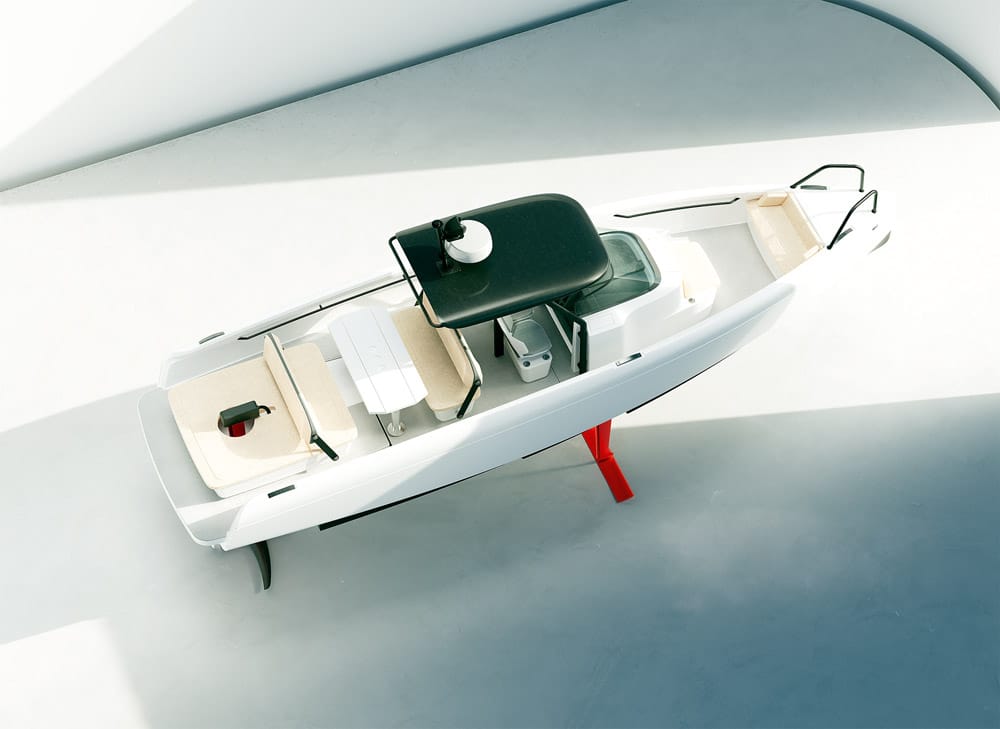
Deck space is maximised.
Specifications
- LOA: 8.89m
- Beam: 2.5m
- Draught: 0.5–1.5 m
- Displacement: 1700kg
- Engine: 75kW
- Range: 57nm at 22 knots
- Top speed: 30 knots
- Material: carbon-fibre
- Length: 29 feet
- Range: 57 n. miles – 22 knots
- Charge Time: 45 MINUTES Full
- Charge Cost: €10
Price
- Made entirely from carbon fibre, the C-8 CC starts at €330,000.
- Price includes free over-the-air system updates of new features in the coming years.
Contact
* Editor’s Note: By our calculations, a marina installed Aqua superPower 75kWh DC charger would take 55 minutes and based on the assumption marina chargers will be a similar fee to car EV chargers – a full charge would total a cost of £24-£27 here in the UK.

